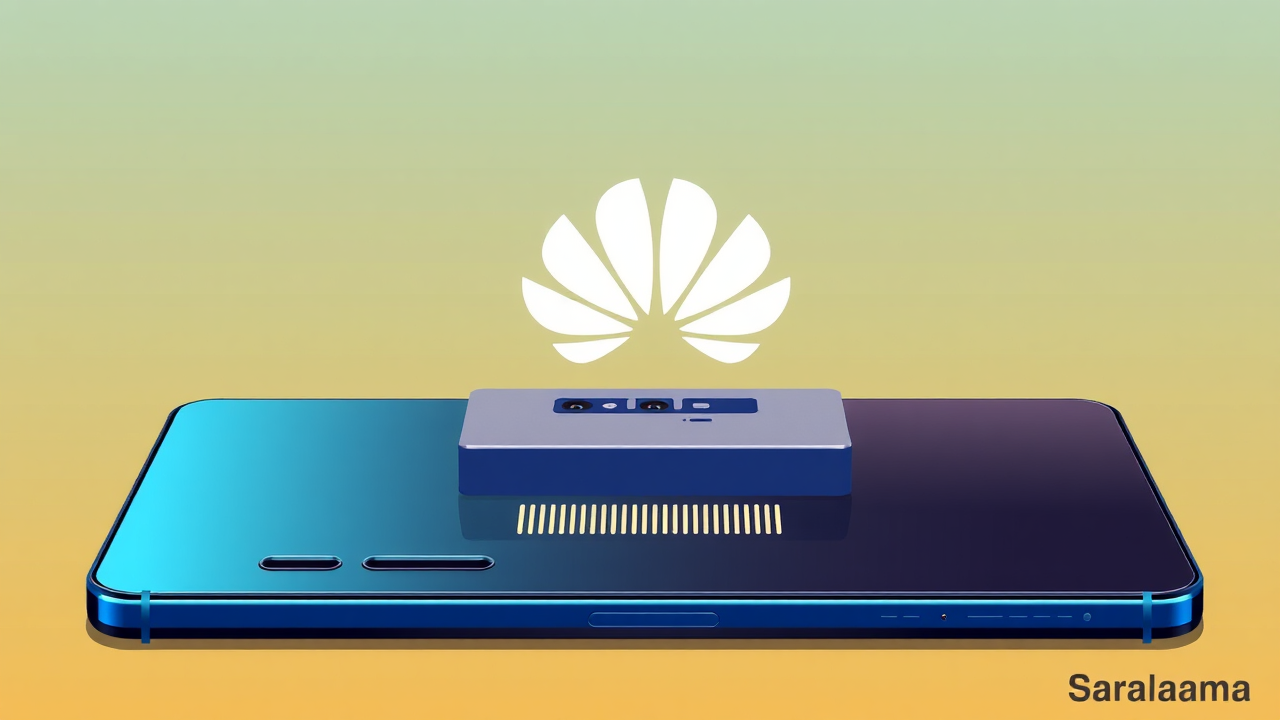Huawei is preparing to launch its Mate 80 series smartphones, with the Pro Max model already making waves in the tech world. Spotted on Geekbench, the upcoming device reveals exciting specifications that hint at Huawei's continued innovation in mobile technology. The smartphone is expected to feature advanced hardware and cutting-edge performance, signaling the brand's commitment to pushing technological boundaries in the competitive smartphone market.

Geekbench Reveals Powerful Chipset Details
The Huawei Mate 80 Pro Max has been listed on Geekbench with model number HUAWEI SGT-AL10, showcasing impressive technical specifications. The device is powered by a Kirin 9030 nona-core chipset with a sophisticated architecture. This processor features one prime core running at 2.75GHz, four mid cores at 2.27GHz, and four efficiency cores operating at 1.72GHz. The chipset's complex configuration suggests significant improvements in processing power and energy efficiency compared to previous generations. Benchmark scores reveal a single-core performance of 1,131 points and a multi-core performance of 4,277 points, indicating robust computational capabilities that could position this smartphone as a high-performance device in the premium segment.
Advanced Memory and Configuration Options
Huawei is set to offer the Mate 80 Pro Max in two substantial memory and storage configurations. Users can choose between 16GB RAM + 512GB storage and 16GB RAM + 1TB storage variants. The device will be available in four elegant color options: Aurora Blue, Polar Night Black, Polar Silver, and Polar Day Gold. The generous RAM allocation suggests the smartphone is designed for power users who require significant multitasking capabilities and smooth performance across complex applications. The substantial storage options also provide ample space for apps, media, and personal content, catering to users with diverse digital needs.
Operating System and Benchmark Environment
The Geekbench listing shows the device running Android 12, though this might be a placeholder. Huawei has been transitioning away from standard Android to its proprietary HarmonyOS in recent years. The motherboard identifier includes 'SGP', which could indicate specific hardware configurations. The nona-core chipset's design suggests a focus on delivering balanced performance across different computational tasks, with dedicated cores for high-intensity, moderate, and energy-efficient operations. This strategic core distribution aims to optimize battery consumption while maintaining high performance levels.
Anticipated Launch and Market Positioning
The Huawei Mate 80 series is expected to include multiple models: Mate 80, Mate 80 Pro, Mate 80 Pro Max, and Mate 80 RS Master Edition. This diverse lineup indicates Huawei's strategy to cater to different consumer segments with varied preferences and budget requirements. The Pro Max variant, with its high-end specifications, is positioned as a flagship device targeting tech enthusiasts and professionals who demand top-tier mobile performance. The inclusion of a powerful Kirin 9030 chipset and substantial RAM configurations suggests Huawei is committed to maintaining its reputation for producing technologically advanced smartphones.
Technical Architecture Breakdown
The Kirin 9030 chipset represents a significant technological leap, utilizing an ARMv8 architecture that enables efficient processing across different computational scenarios. With a base frequency of 1.72GHz for efficiency cores, the chip demonstrates Huawei's focus on creating a balanced performance ecosystem. The processor's design allows for seamless transitions between high-performance and energy-saving modes, which is crucial for modern smartphone users who require consistent and reliable device performance throughout the day.
RAM and Performance Considerations
The device is expected to feature approximately 15.26GB of RAM, which will likely be marketed as a 16GB variant. This substantial memory allocation enables smooth multitasking, enhanced app performance, and improved overall user experience. By providing such extensive RAM, Huawei demonstrates its understanding of modern mobile computing requirements, where users frequently run multiple complex applications simultaneously and expect instantaneous responsiveness from their devices.
Color Options and Aesthetic Design
Huawei has carefully selected four color options for the Mate 80 Pro Max, reflecting a sophisticated and contemporary design philosophy. The chosen colors – Aurora Blue, Polar Night Black, Polar Silver, and Polar Day Gold – suggest a blend of elegant and dynamic aesthetic choices. Each color is likely designed to appeal to different consumer preferences, from understated professionals to those who prefer more vibrant and expressive device appearances. The color selection also indicates Huawei's attention to visual design alongside technical performance.
Market Context and Technological Evolution
The Mate 80 Pro Max emerges in a competitive smartphone landscape where technological innovation is paramount. By introducing a nona-core chipset with sophisticated performance segmentation, Huawei is positioning itself as a serious contender in the high-end smartphone market. The device's specifications suggest a continued commitment to pushing technological boundaries, even as the company navigates complex global technology ecosystems. The strategic focus on advanced chipset design, substantial memory, and diverse configuration options demonstrates Huawei's resilience and technological expertise.
Source: Link
